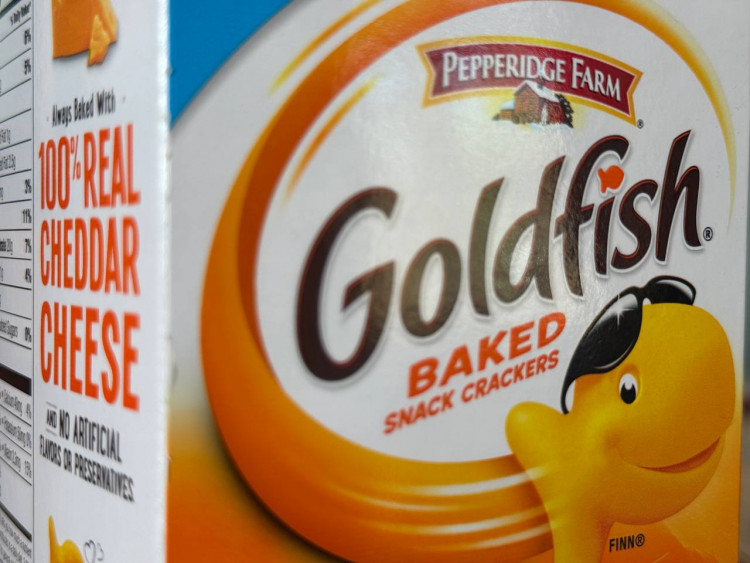Goldfish, the beloved snack known for its kid-friendly appeal, is taking a surprising turn with a new name aimed at attracting an older audience. Pepperidge Farm, the company behind the iconic fish-shaped crackers, announced a limited-time rebranding of the snack to "Chilean Sea Bass," in a bid to appeal to adult consumers. The name change, which began on October 23, is part of the brand's broader strategy to extend its reach beyond children and capture the attention of Gen Z and Millennial snackers.
Despite adopting the more sophisticated name associated with fine dining, the actual recipe and appearance of the crackers will remain the same. The decision to rebrand is not about altering the product but rather reinforcing the message that Goldfish crackers are "not just for kids," according to the company. Danielle Brown, vice president of Goldfish, explained to CNN, "We know Goldfish are a lunchbox icon, but the truth is, they're loved by snackers of all ages. So, as a playful reminder, we went ahead and gave our iconic cheddar cracker a new, fun, grown-up name."
The limited-edition Chilean Sea Bass bags won't be available in stores; instead, fans can purchase them online for a short window, running through October 30. While the rebranded packaging is intended to be a temporary stunt, traditional Goldfish bags will continue to be sold in retailers nationwide. The move is meant to generate buzz and remind consumers that even though there are many newer brands in the snack market, Goldfish remains a classic that can cater to more mature palates.
This name tweak, though playful, is deeply rooted in the brand's history. Goldfish were initially introduced in the U.S. in 1962 as a bar snack aimed at adults. However, by the 1990s, the marketing focus shifted toward children, with the familiar playful packaging and advertisements that made Goldfish a staple in school lunches. Now, with this rebranding, Goldfish is attempting to reconnect with the adults who grew up snacking on the crackers and might appreciate a more sophisticated approach.
The rebranding campaign aligns with broader consumer trends. Gen Z and Millennials have embraced nostalgia-driven foods, often turning to the snacks they enjoyed as children but with a more grown-up twist. "There is this broader consumer behavior around the idea of 'permissible indulgence' where adults allow themselves to indulge in nostalgic or fun treats," said Nate Rosen, founder of Express Checkout, a consumer goods trends newsletter. He added that the clever marketing tactic not only taps into nostalgia but also helps differentiate Goldfish from the growing competition in the snack food industry.
In addition to this temporary rebranding, Goldfish has been expanding its product line in recent years to include flavors and varieties that appeal to adult consumers. The company has rolled out spicier versions of the crackers, such as Goldfish Old Bay Seasoning and Goldfish Frank's RedHot, as well as Mega Bites, a larger-sized cracker meant to satisfy adult snackers. This diversification has helped the brand remain relevant in an increasingly crowded snack market.
According to Campbell's, the parent company of Pepperidge Farm, the push to make Goldfish a $1 billion brand has led to significant investments in production. Last year, the company invested $160 million in expanding its Pepperidge Farm factory in Utah to meet the growing demand for Goldfish. Once completed, the facility will be capable of producing over 5 million crackers per hour.
Goldfish's efforts appear to be paying off. Despite a general decline in snacking since the peak of the pandemic, Campbell's snack sales have grown by 13% in the past year, driven in part by the popularity of its Goldfish line. This growth comes as other legacy food brands scramble to capture a larger share of the snack market, which is valued at over $200 billion.






